Colville’s Glory is one of the many picture perfect trees in Lalbagh. The tree is named after Sir Charles Colville who was Army Commander-in-chief in Bombay from 1819 to 1825 and subsequently Governor of Mauritius from 1828 to 1834.
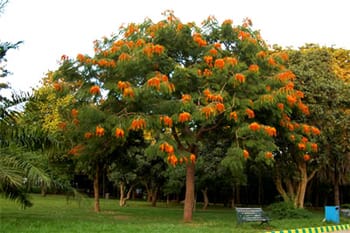 Colville’s Glory tree Pic: MS.
Colville’s Glory tree Pic: MS.
 Colville’s Glory flowers. Pic: MS.
Colville’s Glory flowers. Pic: MS.
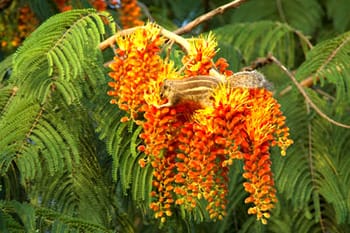 Squirrel on flowers of Colville’s Glory. Pic: MS.
Squirrel on flowers of Colville’s Glory. Pic: MS.
Bojer, an Austrian Botanist, first found a single cultivated tree in 1824 in Madagascar when he mounted a specimen collecting expedition from Mauritius. Further, he described, in 1829, the flamboyant (Delonix regia or Gulmohur) which also he found in Madagascar.
Eight of the ten known species of Baobabs also come from Madagascar. It was from Mauritius that Colville’s Glory and the Gulmohar were disseminated worldwide, including India. (Source: Vijay Thiruvadi.)
Jarul (Pride of India) is named after Magnus Lagerstroem, a Swedish merchant who funneled specimens from the East to Linnaeus in Europe. This tree is found across the Indian subcontinent in the Western Ghats, Bengal, Bangladesh, Assam, Myanmar and Sri Lanka. (Source: Vijay Thiruvadi.)
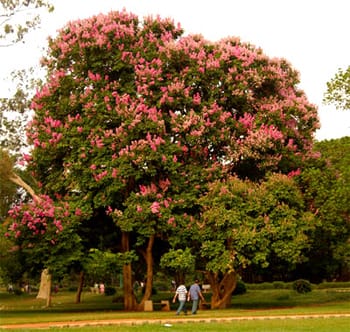 The Pride of India Pic: MS.
The Pride of India Pic: MS.
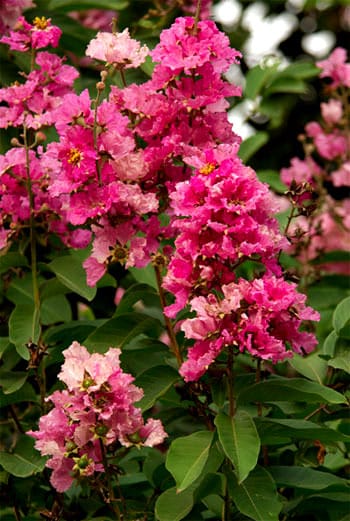 Pride of India’s Flowers. Pic: MS.
Pride of India’s Flowers. Pic: MS.
A few more flowering trees: the Brownea tree, and the Candle tree.
Brownea tree
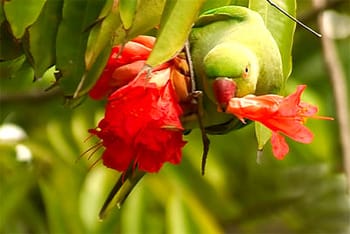 Parakeet feeding on the Brownea tree’s flower. (Pic: Mahesh Srinivas)
Parakeet feeding on the Brownea tree’s flower. (Pic: Mahesh Srinivas)
Candle Tree
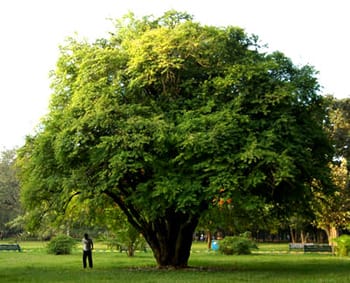 Candle tree (Pic: MS)
Candle tree (Pic: MS)
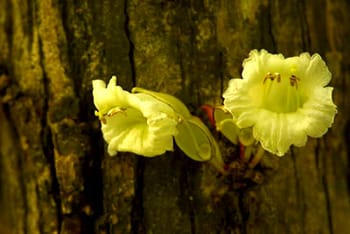 Candle Tree flowers. Pic: MS.
Candle Tree flowers. Pic: MS.
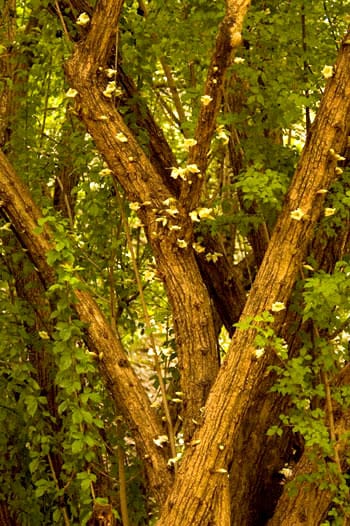 Candle Tree branches. Pic: MS.
Candle Tree branches. Pic: MS.
⊕
Nice pictures!